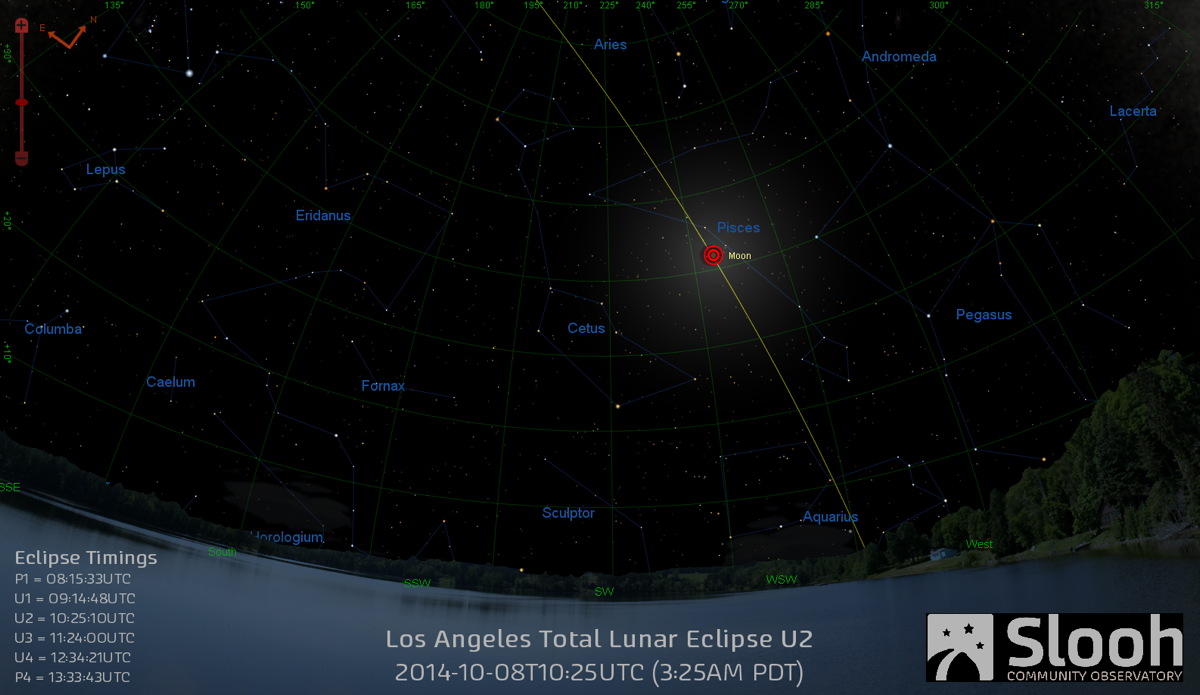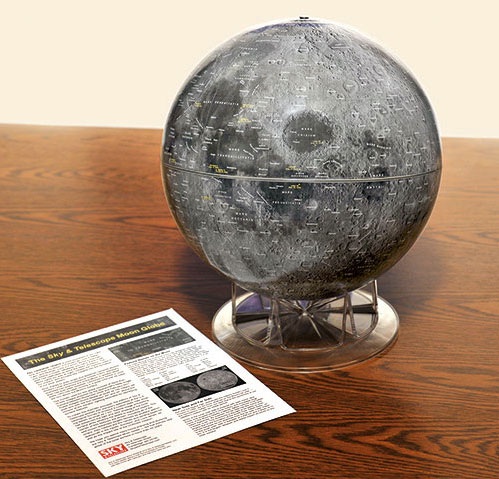Total Lunar Eclipse Spawns 'Blood Moon' Early Wednesday: Watch Online

A total lunar eclipse will rise Wednesday (Oct. 8), and even if you can't see the full "blood moon" rise from your city, you can watch it online via two webcasts.
Tomorrow's total lunar eclipse should be visible, weather permitting, from parts of East Asia, Australia, much of North America and western South America. The Slooh Community Observatory will host a webcast tomorrow (Oct. 8) on its website (http://www.slooh.com) featuring live views of the total eclipse starting at 5 a.m. EDT (0900 GMT). NASA will also carry a live stream of the eclipse alongside a chat with the space agency's lunar eclipse experts starting at 3 a.m. EDT (0700 GMT).
You can watch the total lunar eclipse webcasts on Space.com or directly through Slooh, NASA and the Virtual Telescope Project, which will stream its own views from Italy at 6 a.m. EDT (1000 GMT). [How to See the Total Lunar Eclipse (Visibility Maps)]
"The color of the moon when the eclipse is total delivers an environmental report card about ourselves," Slooh astronomer Bob Berman said in a statement. "If the moon turns coppery red, that’s normal. But a black totality indicates either major volcanic eruptions on Earth, or rare cloudiness surrounding the limb of our planet. This potential variability provides yet another reason to tune in."

People on the east coast of the United States should be able to see totality begin at about 6:25 a.m. EDT (1025 GMT), just before sunrise. Observers on the west coast of North America have a better chance of seeing the total lunar eclipse because totality should last for about an hour starting at 3:25 a.m. EDT (0725 GMT), when it is completely dark outside.
The moon's orbit isn't a perfect circle, so instead of passing through the Earth's shadow each month an eclipse of the moon only occurs during a full moon, when the planet and the natural satellite are well aligned.
The last total lunar eclipse tetrad happened from 2003 to 2004. The next lunar eclipse in the series is set to rise on April 4, 2015, and the last in the tetrad will appear in September of the same year.
Get the Space.com Newsletter
Breaking space news, the latest updates on rocket launches, skywatching events and more!
Editor's Note: If you snap an amazing picture of the Oct. 8 total lunar eclipse, you can send photos, comments and your name and location to managing editor Tariq Malik at spacephotos@space.com.
Follow Miriam Kramer @mirikramer and Google+. Follow us @Spacedotcom, Facebook and Google+. Original article on Space.com.
Join our Space Forums to keep talking space on the latest missions, night sky and more! And if you have a news tip, correction or comment, let us know at: community@space.com.

Miriam Kramer joined Space.com as a Staff Writer in December 2012. Since then, she has floated in weightlessness on a zero-gravity flight, felt the pull of 4-Gs in a trainer aircraft and watched rockets soar into space from Florida and Virginia. She also served as Space.com's lead space entertainment reporter, and enjoys all aspects of space news, astronomy and commercial spaceflight. Miriam has also presented space stories during live interviews with Fox News and other TV and radio outlets. She originally hails from Knoxville, Tennessee where she and her family would take trips to dark spots on the outskirts of town to watch meteor showers every year. She loves to travel and one day hopes to see the northern lights in person. Miriam is currently a space reporter with Axios, writing the Axios Space newsletter. You can follow Miriam on Twitter.









